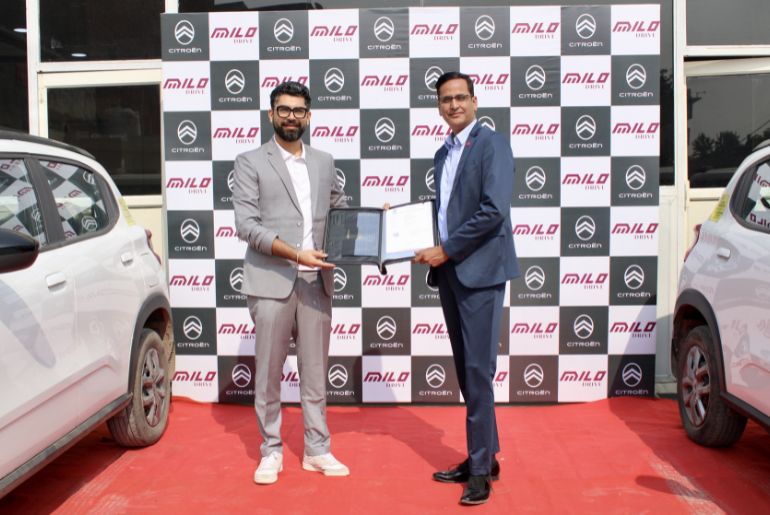Citroën India has strengthened its electric mobility strategy by signing a Memorandum of Understanding (MoU) with Milo Drive to deploy 500 all-electric Citroën ë-C3 vehicles across India. Announced on November 21, 2025, the partnership aims to scale clean, connected, and cost-efficient mobility solutions while supporting India’s transition toward a low-carbon transportation ecosystem.
The initiative will see Milo Drive integrate the 500 ë-C3s into its advanced fleet management platform, Fleet OS, which enables driver entrepreneurs and fleet operators to optimise vehicle usage across ride-hailing, corporate travel, airport services, and intracity mobility. The system harnesses demand routing, utilisation analytics, battery intelligence, and driver performance insights to maximise profitability and operational efficiency.
Speaking about the collaboration, Shishir Mishra, Business Head & Director – Strategic Partnerships & Institutional Business, Stellantis India, said the partnership reflects a shared commitment to building future-ready EV ecosystems. “Scaling electric mobility in India requires robust, technology-driven collaborations. The Citroën ë-C3 delivers the right mix of range, comfort, and operating efficiency, making it a reliable performer for shared mobility. Together, we are enabling EV access at scale and contributing to India’s shift toward a low-carbon mobility landscape,” he stated.
Monil Jayeshkumar Khatri, Co-Founder of Milo Drive, highlighted the value of Citroën’s engineering capabilities combined with Milo Drive’s tech infrastructure. He emphasised that the partnership merges affordability with intelligence, offering real-time battery diagnostics and high-performance analytics to support entrepreneurs in building scalable mobility businesses. “This collaboration marks a major milestone in our mission to electrify urban mobility across India,” he added.
The deployment of 500 ë-C3 EVs underscores Citroën’s commitment to making sustainable mobility accessible while reinforcing Milo Drive’s vision of building an asset-light, tech-enabled fleet infrastructure that powers India’s next phase of connected mobility.

